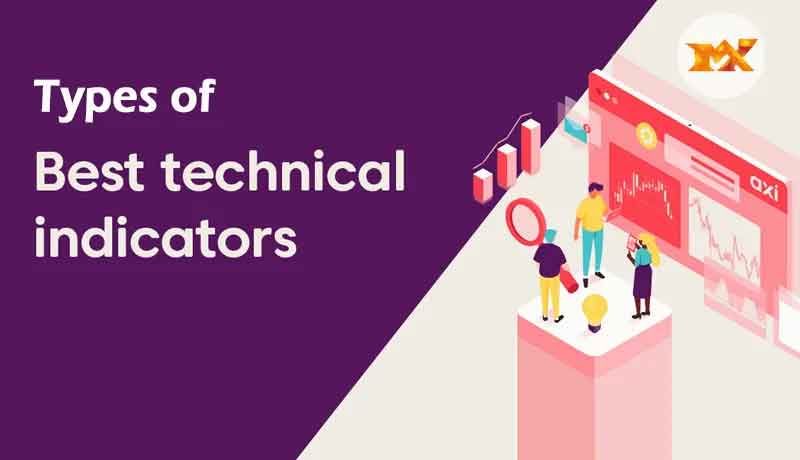Top 4 Types of Trend Indicator in Forex Trading

![]()
Many forex traders waste time seeking for the right timing to join the market or a telltale indication. That says “buy” or “sell.” While the hunt might be exciting, the end outcome is always the same. The fact is that there is no one-size-fits-all approach to trading the FX markets. As a consequence, traders must get familiar with the many market trend indicator. That may assist them in determining the optimal moment to purchase or sell a currency cross rate. Milliva the best forex broker in the World provides MT5 trading platform with the best indicators.
The Most Successful Forex Traders Relay on Four Main Market Trend Indicator
No.1: A Trend-Following Tool Indicator
This is one of the most important trend indicator. It is feasible to profit from a countertrend trading strategy. For most traders easiest way is to detect the big trend’s direction. And seek to benefit by trading in that direction. This is where trend-following software may help.
While it is feasible to utilise a trend-following tool. As a standalone trading strategy, the true function of a trend-following tool is to indicate. Whether you should be seeking to initiate a long or short position. So let’s take a look at one of the most basic trend-following techniques: the moving average crossover.
Many investors say that certain combination is the greatest. But the truth is that there is no such thing as a “best” moving average combination. Finally, forex traders will gain the most by determining which combination (or combinations) best suit their time periods. Trend as demonstrated by these indicator should utilised to determine whether traders should go long or short.
Indicator
No. 2: A Tool for Confirming Trends Indicator
We now have a trend-following technology that can tell us if a currency pair’s primary trend is up or down. But how trustworthy is that metric? Trend-following tools, previously stated, prone to getting whipsawed. As a result, having a mechanism to determine whether or not the present trend-following indicator is right would be beneficial.
We’ll use a trend-confirmation tool for this. A trend-confirmation tool, like a trend-following tool, may or may not designed to provide particular buy and sell recommendations. Rather, interested in seeing if the trend-following and trend-confirmation tools agree.
In other words, if both the trend-following and trend-confirmation tools are positive a trader will be confident in initiating a long position in the currency pair. If both are bearish, the trader can concentrate on finding a way to sell short the currency pair in issue.
Moving Average Convergence Divergence Indicator
The moving average convergence divergence is one of the most popular and useful trend confirmation methods (MACD). The difference between two exponentially smoothed moving averages is the initial metric used by this indicator. After then, the difference is smoothed and compared to its own moving average.
Histogram at bottom of the chart is positive indicating that current smoothed average is above indicating that an uptrend is verified.
The histogram at the bottom of the chart is negative when the current smoothed average is below its moving average, suggesting a downtrend.
In other words, we have a confirmed downtrend when the trend-following moving average combination is bearish (short-term average below long-term average) and the MACD histogram is negative. We have a verified rise when both are positive.
MACD Indicator
Another trend-confirmation indicator included at the bottom of the chart, which might used in addition to (or instead of) MACD. It’s a measure of how quickly something changes (ROC).
The price is greater now than it was 28 days ago if the reading is above 1.00, and vice versa if the reading is below 1.00. A 28-day moving average of daily ROC values represented by the blue line. If the red line is higher than the blue line, the ROC is indicating an upward trend. We have a verified decline if the red line is below the blue line.
The euro/yen cross witnessed strong price decreases from mid-January to mid-February, late April through May, and the second half of August, all of which were accompanied by:
Below the 200-day moving average is the 50-day moving average.
A MACD histogram that is negative
No. 3: Overbought or Oversold Tool
A trader must determine comfortable stepping in as soon as a clear trend developed or after a retreat happens after electing to follow the direction of the big trend. To put it another way, if the trend is bullish, the question becomes whether to purchase into strength or weakness.
Entering a trade as soon as an upswing or decline is verified. If you want to get in as soon as feasible. You may on the other hand, wait for a downturn inside the wider general main trend in the expectation of a lower-risk opportunity. For instance, a trader will employ an overbought/oversold indicator.
Trader wanting to enter on pullbacks would consider going long if the 50-day moving average is above the 200-day and the three-day RSI falls below a given threshold, such as 20, indicating an oversold position.
In contrast, if the 50-day is below the 200-day and the three-day RSI climbs beyond a given level, such as 80, the trader may consider opening a short position, indicating an overbought situation. Varying traders may opt to use different degrees of triggers.
No.4: A Profit-Taking Tool
The last form of indication a forex trader requires is one that aids in determining when to exit a profitable deal. Here, too, there are many choices available. The three-day RSI, in fact, falls under this group. In other words, if the three-day RSI rises to a high level of 80 or more, a trader holding a long position could consider taking some gains.
A trader with a short position, on the other hand, would consider taking a profit if the three-day RSI falls to a low level, such as 20 or less.
Bollinger Bands, a prominent indicator, is another effective profit-taking technique. To build trading “bands,” this tool takes the standard deviation of price-data changes over a period and adds and subtracts it from the average closing price over that same time frame. While many traders use Bollinger Bands to gauge trade entry, they may also be used to take profits.
A “trailing stop” would be a last profit-taking instrument. Trailing stops are commonly employed to provide a trade the ability to let profits run while also aiming to avoid losing any profits that have built. A trailing halt can be reached in a variety of ways.
About Milliva:
Milliva the Best Broker In India For Forex is a significant provider of online currency (FX) trading, contract for difference (CFD) trading, and associated services. We offer account types and services that are customized to meet the needs of all levels of retail traders.
visit us on: www.milliva.com








Hanging Man Candlestick Pattern in Trading
01st Jul 2022[…] Hanging Man candlestick pattern is a warning indicator for purchasers. Who wish to maintain the price for further profit on a price chart. It assists […]
How to Trade Triangle Trading Pattern in Forex
07th Jul 2022[…] before breaking new ground. The chartist will be looking for an increase in trading volume as a crucial indicator of the formation of new highs. It will take around four weeks for an ascending triangle pattern to […]
Understanding the Different Types of Forex Trading
16th Aug 2022[…] so here we use forex trading. Like this we will use trading all over the world. In different types of trading, we will trade according to that […]